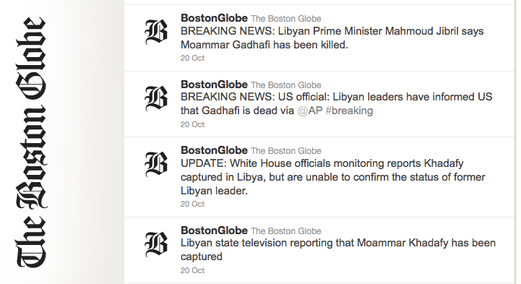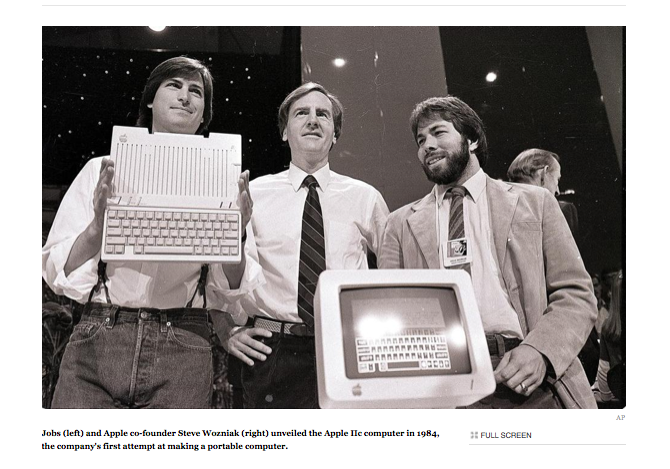Moammar Gadhafi, the overthrown Libyan leader, took over news stations Thursday with news that he had died from a bullet to the head.
The Boston Globe used social media to update the status of this breaking news.
By using all-capital status markers such as BREAKING NEWS and UPDATE, The Globe effectively drew attention to their tweets in a crowded news feed.
I first heard news of Gadhafi's death through Twitter (@BostonGlobe). I was instantly drawn to The Globe's updates. They were succinct, but provided all necessary information. Their tweets were frequent, but not overwhelming.
Overall, The Boston Globe used social media to their advantage to bring readers in and provide up-to-date coverage on this world news story.
The Boston Globe used social media to update the status of this breaking news.
By using all-capital status markers such as BREAKING NEWS and UPDATE, The Globe effectively drew attention to their tweets in a crowded news feed.
I first heard news of Gadhafi's death through Twitter (@BostonGlobe). I was instantly drawn to The Globe's updates. They were succinct, but provided all necessary information. Their tweets were frequent, but not overwhelming.
Overall, The Boston Globe used social media to their advantage to bring readers in and provide up-to-date coverage on this world news story.







 RSS Feed
RSS Feed